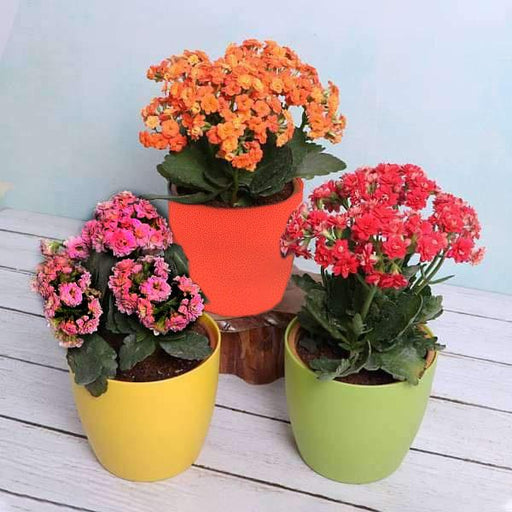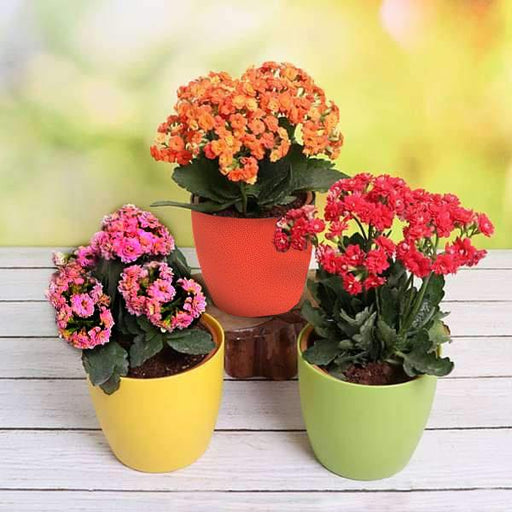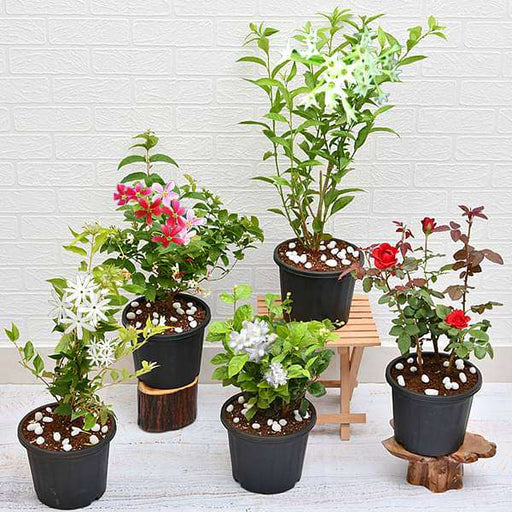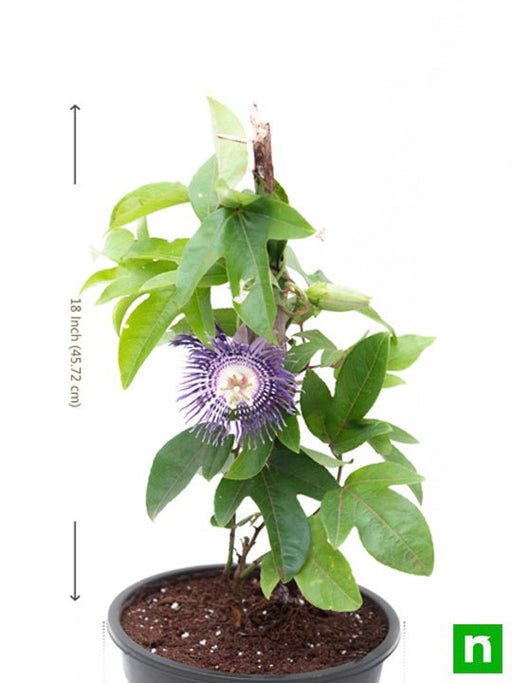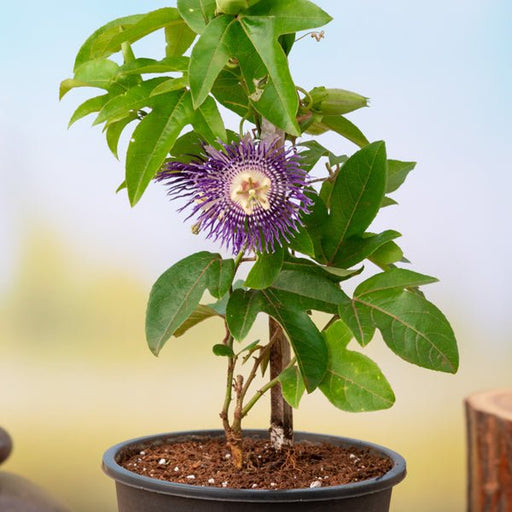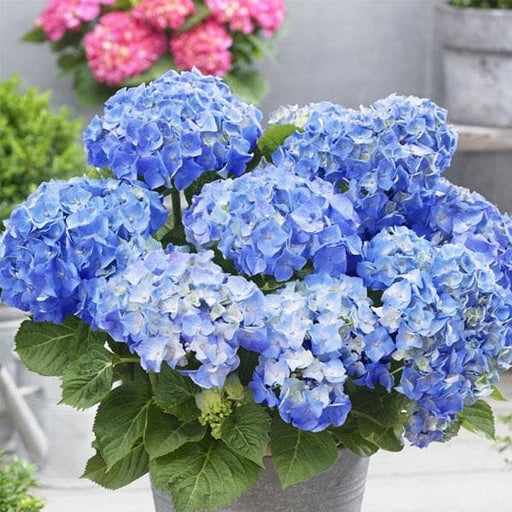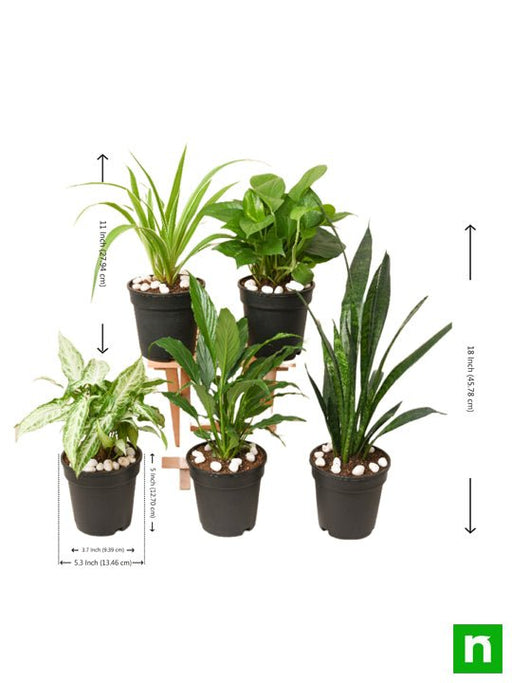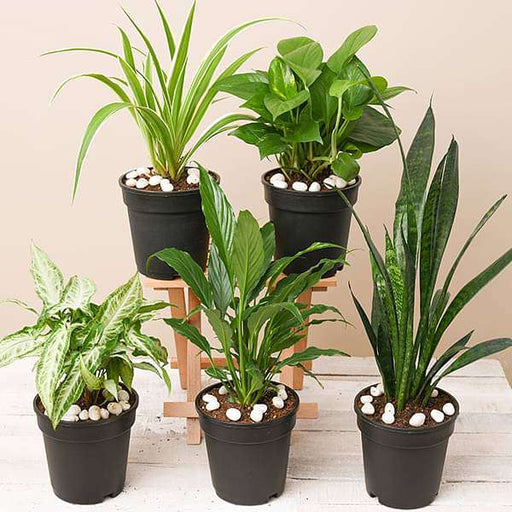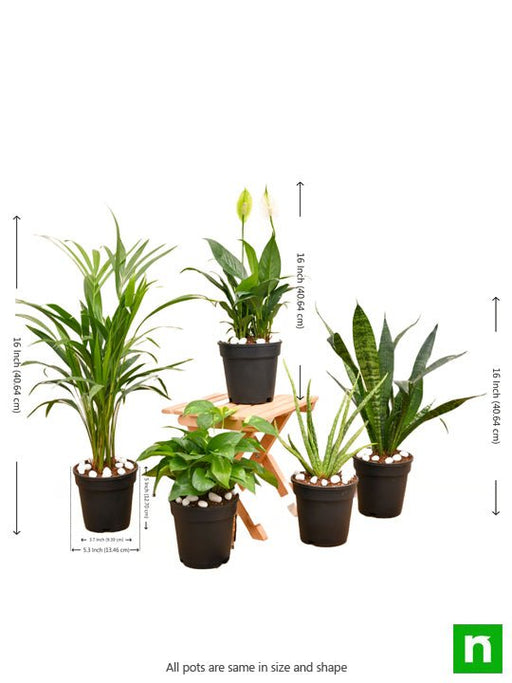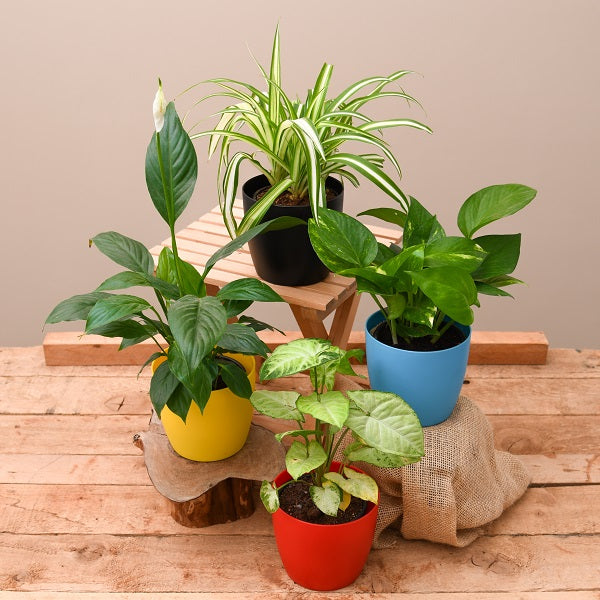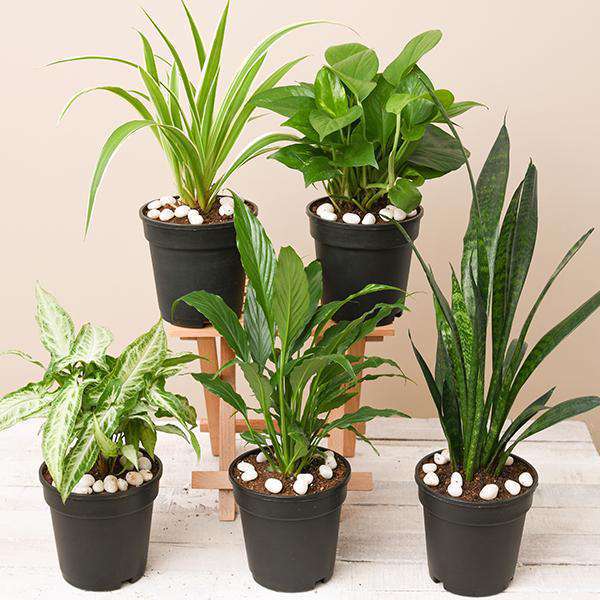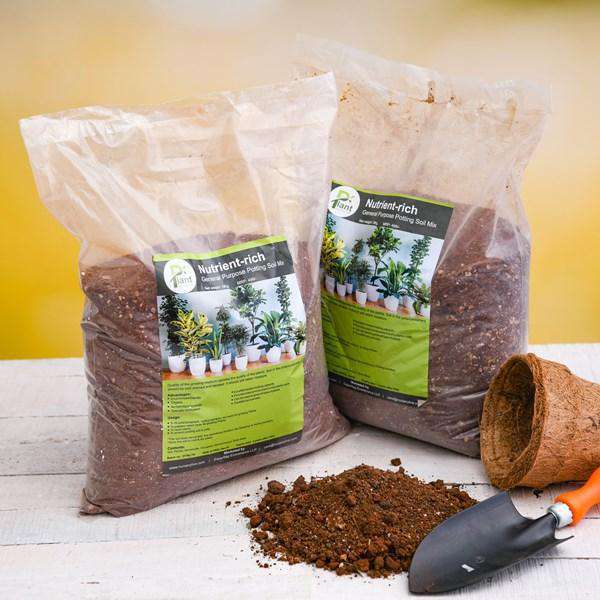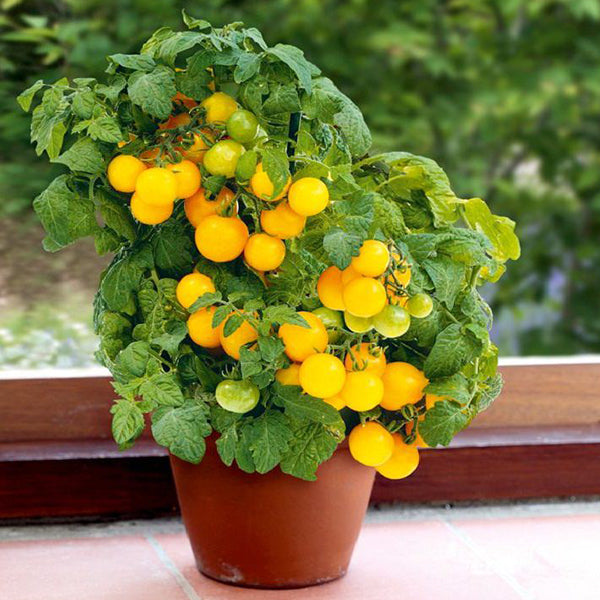Description
Tulbaghia (wild garlic or society garlic) a monocotyledonous genus of herbaceous perennial bulbs native to Africa, belonging to the Amaryllis family.
| Sr |
Item name |
| 1 |
Tulbaghia Fragrans, Sweet Garlic - Plant |
| 2 |
5 inch (13 cm) Grower Round Plastic Pot (Black) |
As is common to many members of the onion tribe, when their leaves are bruised they produce a distinct garlic smell, hence its common name. The flowers are borne in an umbel. Each flower has six narrow tepals.
A characteristic of the genus is that there is a corona a raised crown-like structure at the centre of the flower. This may be small and scale-like or may be larger, somewhat like the trumpet of a small narcissus.Tulbaghia fragrans is a slender, erect, clump-forming, perennial to 25 cm. The inflorescence is an umbel of pink to mauve-pink, occasionally white, strongly fragrant, tubular flowe It flowers at the end of winter when the leaves are still dormant. It grows best in the semi shade and is used medicinally.Plant it en masse in sun or semi-shade. Due to the fact that it is deciduous it can be interplanted with an evergreen perennial such as Bulbine or grasses.
Plant Specifications
| Plant Height |
9 inch (23 cm) |
| Plant Spread |
4 inch (10 cm) |
*above specification are indicative only. actual dimensions may vary by +-10%
| Common Name |
Tulbaghia fragrans, Sweet garlic, Pink agapanthus, Tulbaghia pulchella |
| Maximum Reachable Height |
1.00 to 1.50 feet |
| Flower Colour |
Creamy white to pinkinsh or purple |
| Bloom Time |
August to September |
| Difficulty Level |
easy to grow |
Planting and care
Harvest by cutting them with kitchen scissors or shears just below the surface of the soil, don, t cut midway through the chive. This is due to the fact that most of the flavour is in the base, and it also encourages more growth of the plant outwards (cutting at a midway point will kill the rest of the chive remaining).
Tulbaghia Fragrans care
Agapanthus planting is best done during the fall or winter in warm climates.
Caring for an Agapanthus plant is easy in warmer regions. Once planted, this beautiful plant requires very little upkeep.To maintain health and performance, divide the plant once every three yea Be sure to get as much of the root as possible when dividing and only divide after the plant has bloomed. A potted Agapanthus does best when it is mildly root-bound.For those in cooler climates, potted Agapanthus plants must be brought indoors for the winter. Water the plant only once a month or so and place back outdoors after the threat of frost has passed.This easy to grow perennial is a favorite of both southern and northern gardeners alike who appreciate how easy it is to care for and admire the remarkable flower display. As an added bonus, Agapanthus flowers make an eye-catching addition to any cut flower arrangement and the seed heads can be dried for year round enjoyment.
| Sunlight |
Full Sun to Partial Shade |
| Watering |
Dry to medium.It requires a sunny to partly shady location and regular water. |
| Soil |
While it is very tolerant to a wide variety of soil conditions, they do enjoy some rich compost or organic matter added during planting. |
| Temperature |
4 - 5c |
| Fertilizer |
Apply any organic fertilizer |
Tulbaghia Fragrans special feature
Herb gardens, vegetable gardens, cottage gardens or naturalized areas. Attractive flowers have good ornamental value and are pleasant additions to rock gardens or border fronts, however flowers must be deadheaded before setting seed or seedlings will sprout up throughout the garden.
Tulbaghia Fragrans uses
Ornamental Use:
- The plant is used for ornamental purpose
Medicinal Use:
- It is used internally to treat urinary incontinence, kidney and bladder weaknesses etc






